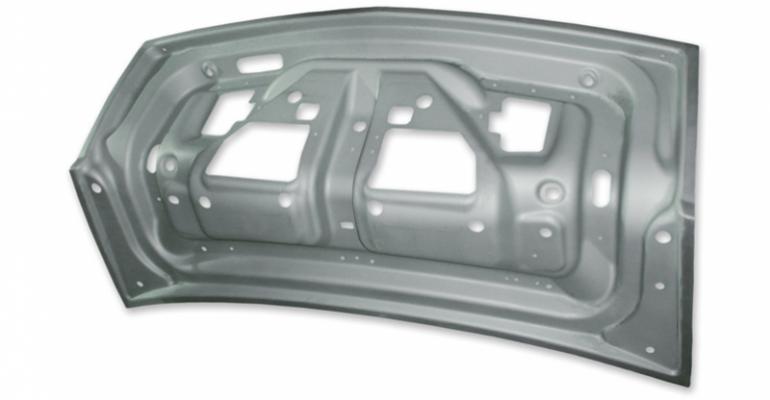General Motors takes another step toward meeting future U.S. fuel-economy regulations, cracking a key mystery to making lightweight magnesium a viable alternative to heavier car and truck body-panel materials.
The auto maker says it is testing an industry-first thermal-forming process and proprietary corrosion-resistant magnesium sheet metal weighing 33% less than aluminum and 75% less than steel to make its future vehicles lighter without sacrificing durability.
Auto makers face strict new U.S. corporate average fuel economy regulations of 35.5 mpg (6.6 L/100 km) in 2017, or some 15% greater than current rules, and as much as 54.5 mpg (4.3 L/100 km) by 2025.
Experts think the industry must shave up to 800 lbs. (350 kg) from the average vehicle to achieve those standards, so auto makers are scouring their research and development laboratories for alternative materials.
Magnesium already is making its way into today’s cars and trucks, appearing as die-cast parts in suspension systems, powertrains and body structures. But it remains costly and, until GM’s breakthrough, too weak and susceptible to corrosion for use as sheet metal.
GM’s forming process, which it wants to license to a supplier, employs traditional methods but turns up the heat to 840° F (450° C) to mold precise, rigid shapes.
The auto maker says it has made a production-ready magnesium rear deck lid inner panel using the process.
The part withstood 77,000 robotic slams and 110-lb. (450 kg) impact drops, as well as 10 consecutive weeks of 24-hour environmental tests using salt spray, high humidity and extreme temperatures. GM uses the same tests to validate the durability of traditional sheet-panel materials.
The magnesium panel weighs 2.2 lbs. (1 kg) less than one made from steel.
GM expects magnesium costs will come down once a supplier begins performing the process and the material becomes more widely used.
“Using high-strength, lightweight materials such as magnesium and aluminum is one of the most effective ways to improve vehicle fuel economy and driving performance,” Jon Laukner, GM’s chief technology officer and vice president-global research and development, says in a statement announcing the breakthrough.
According to the United States Automotive Materials Partnership, a research group formed by GM, Ford and Chrysler to research new materials and processes, magnesium could reduce vehicle weight 15% by 2020. The weight loss would translate into fuel saving of between 9% and 12%.
GM last month revealed it discovered a new technology for welding aluminum, another lightweight material expected to help auto makers meet fuel-economy regulations.





